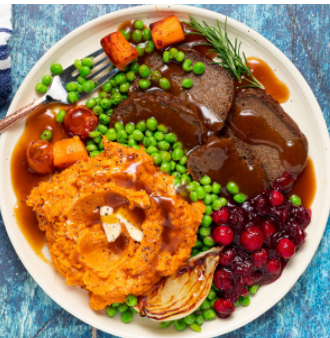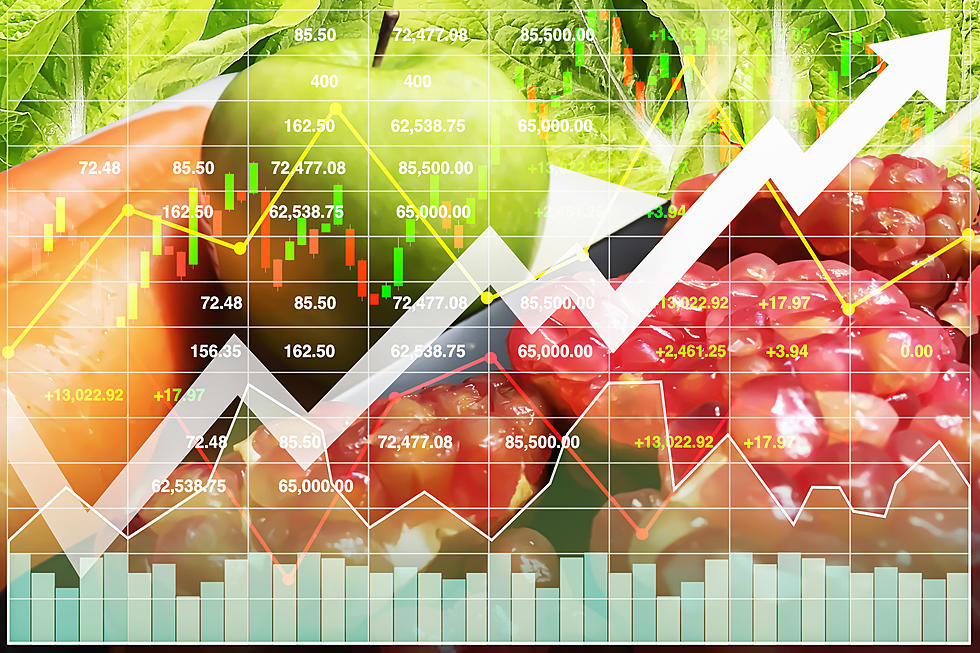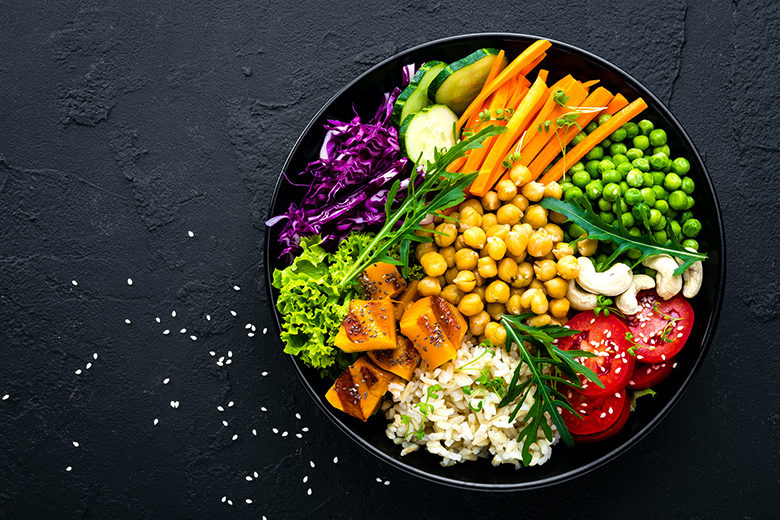
How a Plant-Based Diet Can Improve Gut Health
There are many reasons to feel good about living a plant-based lifestyle. You’re helping the environment and saving millions of animals. However, you should literally feel good by following a vegetarian or vegan diet. That’s because eating more fruits and vegetables is conducive to boosting your beneficial stomach bacteria. Here’s how!
Guest Article: This article is written by Richard Lin, CEO and Cofounder of ThryveInside.com
Fruits, Veggies, and Prebiotics
Our stomach bacteria help us break down solid food particles. Their hard work helps ease our digestion. We reward them by feeding them foods they actually enjoy. Thankfully for those living a cruelty-free lifestyle, they like the foods we do!
There’s a lot of roughage in our fruits and vegetables. These dietary fibers are hard for our digestive organs to break down. So, they remain in the system. Our stomach bacteria feast on the carbohydrates in these fibers for energy. These types of foods are known as prebiotics.
Due to stomach bacteria, we aren’t stuck with excess food sitting in our gut. That usually happens when we eat foods rich in artificial sweeteners and processed animal fats. Those types of foods often lead to inflammation that destroys the gut lining.
Probiotics and Short-Chain Fatty Acids for Gut Healing
Our gut bacteria are living beings. Like us, they must release waste into the system. Luckily for us, that waste actually has healing abilities.
Probiotic metabolites range from vitamins to amino acids. However, the most commonly produced metabolites are short-chain fatty acids.
Cells along our gut lining use short-chain fatty acids as electrical currency. They rely on these short bursts of energy to replicate and get rid of dying cells.
One of the short-chain fatty acids that probiotics typically produce is butyrate. Our gut lining is porous. That allows us to absorb nutrients from food digested in the intestines. However, inflammation around the gut makes these holes bigger, which allows toxins to seep in. Butyrate helps clog those holes, reducing inflammation.
Foods Rich in Prebiotics
Eating a wide variety of fruits and vegetables should give you adequate prebiotics to feed your probiotic gut bacteria. However, some foods have dietary fibers that are more conducive to healthy bacteria growth.

Some of the most common plant-based prebiotics include:
- Jerusalem Artichokes
- Garlic
- Onions
- Apples
- Chicory
- Bananas
- Asparagus
- Leeks Cabbage
The key to cultivating a healthy gut is diversity. You want as many stomach bacteria species as possible. Maintaining this balance will stop one opportunistic species from taking over and causing GI problems.
Nourish your gut by providing it with a range of nutrients. Each color represented on a fruit or vegetable means there are unique compounds that benefit bacterial growth. So, be sure to eat the rainbow.
Gut Health Tests and Prebiotics
While a plant-based diet is ideal for a healthy lifestyle, it does come with GI side effects. For some, too many plant items can cause a lot of gas. Others might even deal with chronic inflammation.
Unfortunately, some plant-based powerhouses, such as beans and eggplant, are rich in lectins. While there are health benefits to lectins, sometimes these compounds drain other nutrients of their powers. Therefore, lectins may cause inflammation and chronic stomach pain. Learn more about living lectin-free as a vegan here.
If you have gut sensitivities, consider getting a gut health test with Thryve. You send in a sample and they analyze your DNA to inform you of your gut bacteria ratios.
As we mentioned, gut bacteria have specific tastes. So, an abundance of one type may give some clues as to which foods might be causing GI triggers.
Personalized Food Recommendations
Thryve’s database also gives you food recommendations to enhance your gut bacteria diversity. You can optimize your options to reflect a plant-based diet.
Here are 100 recipes you can find in the Thryve database:
- Tandori Roasted Chickpea Squash Buddha Bowl
- Shishito Peppers with Pomegranate Caviar
- Apricot Millet Kasha
- Guacamole with Edamame and Sesame
- Roasted Sunchokes with Rosemary
- Avocado Curry Smoked Tofu and Lettuce
- Mango and Jicama Salad with Habanero Vinaigrette
- Celery Margarita
- Bok Choy and Pineapple Slaw
- Black Eyed Pea Collard Rolls
- Dairy-Free Cauliflower Hash Browns
- Lemon Chia Pudding
- Quinoa Adzuki Bean Veggie Burgers
- Carrot Mango and Kiwi Smoothie
- Japanese Sekihan Red Beans and Sticky Rice
- Cranberry Apple Sprouted Buckwheat Cereal
- Pea Potato Crush
- Farfalle with Arugula Pesto
- Spaghetti Squash with Rosemary Olive Oil and Parmesan
- Double Coconut Crunch Muffins
- Pumpkin Seed Beer Brittle
- Mushrooms, Broccoli, and Pomegranate Couscous
- Butterbeans, Artichokes, and Mixed Greens
- Chickpea Tacos
- Roasted Cauliflower with Pine Nuts
- Jicama Fries
- Pumpkin Sunflower Flaxseed Butter
- Dark Chocolate Bark with Roasted Almonds and Seeds
- Multigrain Pilaf with Quinoa, Millet, and Teff
- Stir-Fried Snowpeas with Shiitake and Ginger
- Minted Peas and Wax Beans
- Strawberry Rhubarb Sorbet
- Sesame Seasoned Spinach
- Mung Bean Sprout Salad
- Fennel with Turnip Greens
- White Bean Spread with Roasted Garlic
- Watermelon Lemonade with Kiwi Splash
- Peanut Butter Crispy Rice Treats
- Roasted Thai Curry Cauliflower and Garbanzo Beans
- Black Bean Chocolate Cake
- Sunflower Cookies
- Aztec Corn Salad
- Southern Spicy Black Eyed Pea Dip
- Apple and Celery Granita
- White Rice Sweet Potato and Tomatoes
- Candied-Spiced Chickpeas
- Portabello Mushroom and Dried Tomato Bruschetta
- Paleo Plantain and Apple Fritters
- Black Bean Quinoa Stuffed Zucchini
- Parmesan Herb Millet Cakes
- Napa Cabbage and Cucumber Slaw
- Organic Adzuki Bean Miso Soup
- Sauteed Grape and Goat Cheese Dip
- Brandied Cherries
- Japanese Braised Kabocha Squash
- Red Bean Espresso Brownies
- Roasted Acorn Squash with Cranberry Sauce
- Onion Tartlets
- Peach Strawberry Smoothie
- Pizza Stuffed Mushrooms
- Refried Bean Cakes
- Pickled Unripe Peaches
- Chicken-Like Vegan Gravy
- Blueberry Spinach Salad
- Detoxifying Hummus
- Jalapeño Pepper Pie
- Pumpkin Seed Bread
- Candied Sweet Potatoes
- Hot or Cold Sesame Asparagus
- Spicy Spinach with Sunflower Seeds
- Rosemary Citrus Sorbet
- Candied Cherry Tomatoes
- Sweet and Sour Pineapple Beets
- Rhubarb Compote with Oranges and Figs
- Slow Cooker Brussels Sprouts with Dijon Mustard
- Celery Cider
- Lemon Poppy Seed Mini Muffins
- Herbed Butternut Squash
- Mung Bean Sprout Salad
- Caramel Corn with Peanuts and Dried Cherries
- Juniper Champagne Cocktail
- Detox Kale Salad
- Roasted Cauliflower with Kalamata Olives
- Baked Apple Chips
- Skinny Spiced Crock Pot Mocha
- Stuffed Mushrooms with Zucchini
- Simple Mango Salsa
- Frijoles Negros Picantes
- Garlicky Lima Bean Spread
- Green Chile Corn Fritters
- Chocolate Avocado Truffles
- Cantaloupe Aqua Fresca with Beet Swirl
- Roasted Red Pepper Spread
- Crispy Yukon Golden Diced Tomatoes with Garlic and Thyme
- Cashew Green Beans and Mushrooms
- Cantonese Spinach with Garlic
- Sesame Noodles with Kale
- Hot Cranberry Tea Fusion
- Courgette Fritters
- Honeydew Jalapeño Granita
- All of this and More!
Get these delicious options and more at thryveinside.com.





